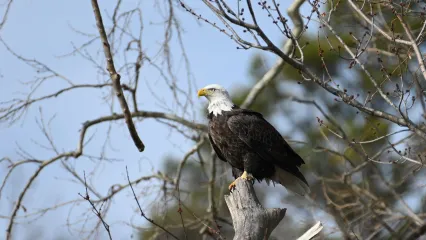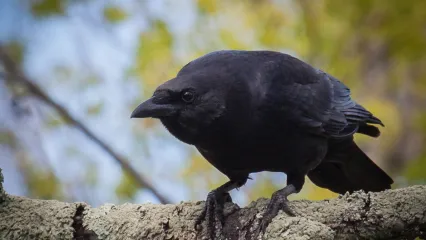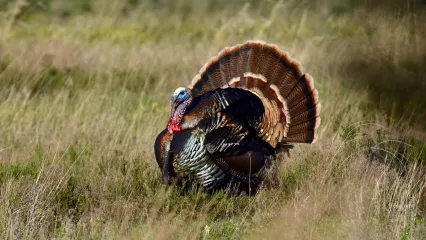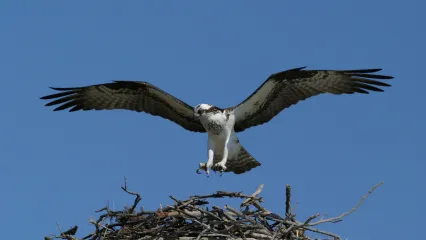
Description
The bald eagle (Haliaeetus leucocephalus) has been a symbol of the United States since 1782. Most Americans are familiar with this bird that appears on currency, logos and seals but know little about the bird itself.
Both male and female mature eagles have identical coloring and can be easily recognized by their white head and tail. Young eagles are almost completely brown, easily confusing them with a mature golden eagle, which is the only other wild eagle species found in the United States.
Eagles are a part of the order Falconiformes, large groups of birds of prey that include hawks, eagles, falcons and vultures among others. Since predatory birds eat live animals for food, they are well equipped with a hooked bill and powerful claws.
Size
Full-grown bald eagles can have a 7-foot wingspan and are among the largest birds of prey in the world. Mature birds stand 3 feet tall and can weigh 8 to 15 pounds.
Habitat
Water plays a significant role in where bald eagles reside. Bald eagles mainly eat fish, so they are drawn to places where fish are easily accessible. They use their talons to snatch fresh fish out of the water, but they will eat dead fish that are accessible. The rest of a bald eagle’s diet is made up of small animals, reptiles and birds, and depends on what is available at various times of the year.
Migratory movement of bald eagles varies in different areas of the country. Southern eagles migrate to the north at the end of summer and will return to the south when breeding season starts in early winter. Most northern eagles will migrate south for the winter. In Oklahoma, bald eagles can be seen from October to April and spend winters at larger reservoirs. The biggest congregation of bald eagles can be found at the Great Salt Plains National Wildlife Refuge. Usually 70 or more will spend the winter either on or near that refuge. A few bald eagles can be spotted at Grand Lake, Fort Gibson, Texoma and Tenkiller lakes along with the Wichita Mountains Wildlife Refuge.
Life Cycle
Bald eagles mate for life and are known to return to the same nest every year. When they start building a nest, they will choose the tallest tree available to them that offers good visibility on both sides. In some areas where trees aren’t available, bald eagles are known to build their sturdy nest on cliffs or pinnacles, the higher the better. Once their nest is made, the female begins to lay eggs. This usually occurs in December and January for southern bald eagles and in spring for the birds in Alaska. The eggs will be incubated for about 35 days. The adult bald eagles will spend most of the day guarding their young, the only interruptions being to gather food.
When the eaglets are 5 to 6 weeks old, they will start to grow their rich brown feathers. The nest becomes a battle ring as they learn to fight and are able to develop their muscles and exercise regularly. As they grow older, they will start to venture farther away from their nest. Eventually they will set out on their own and not return to the nest.


